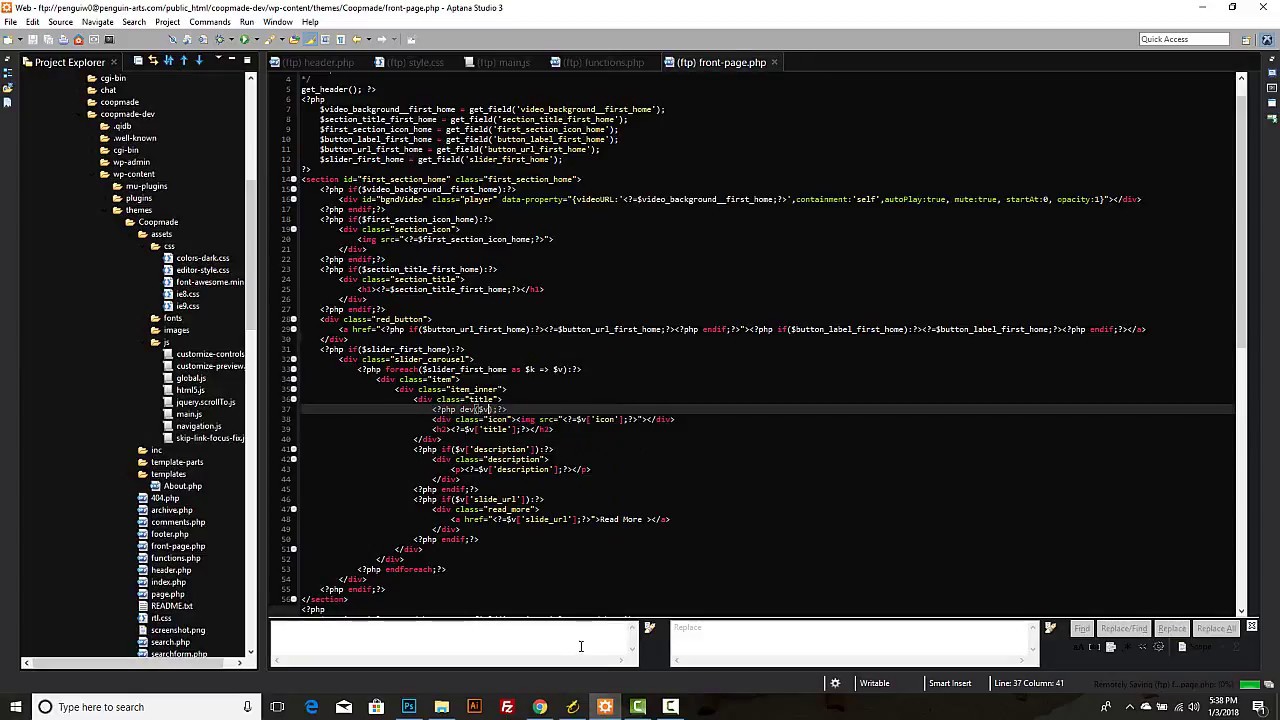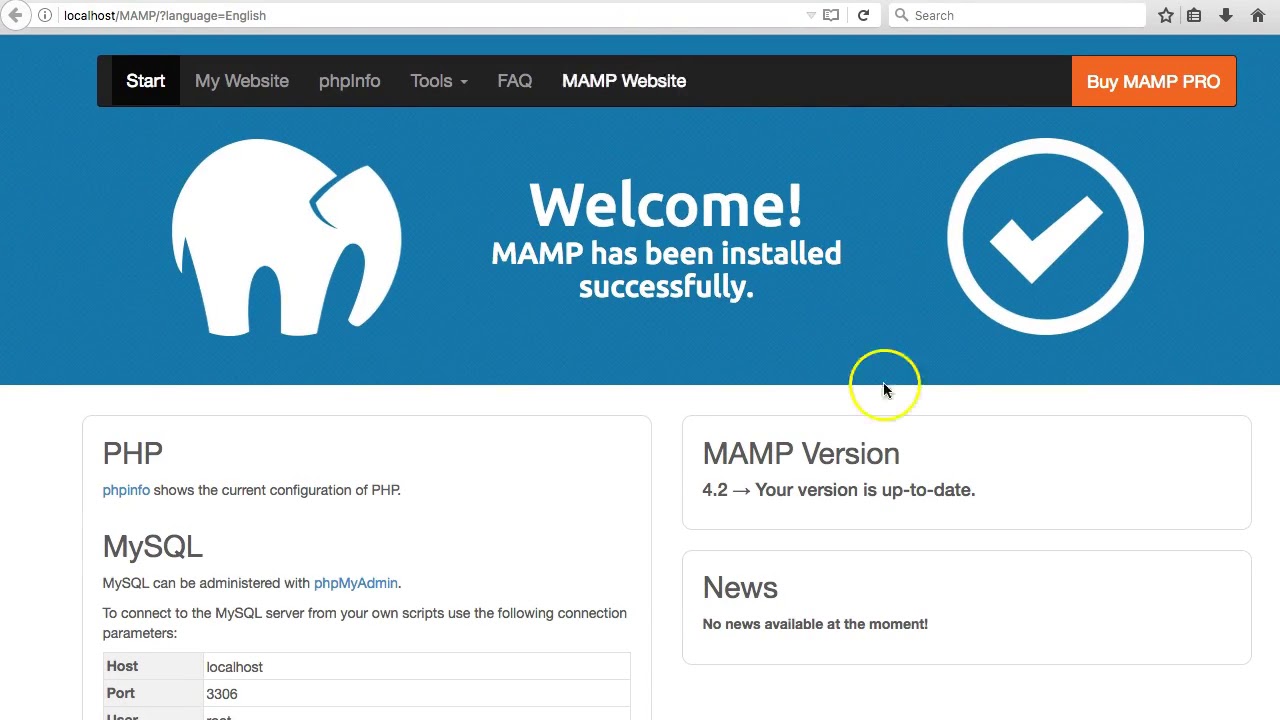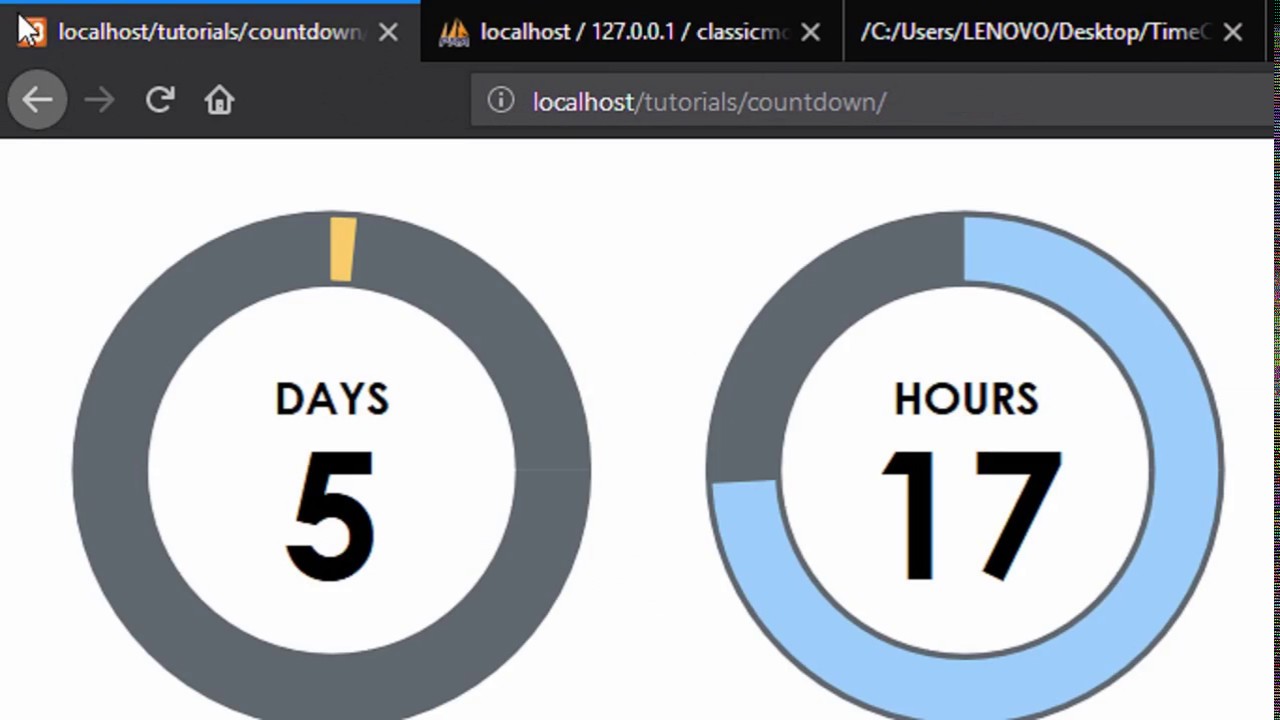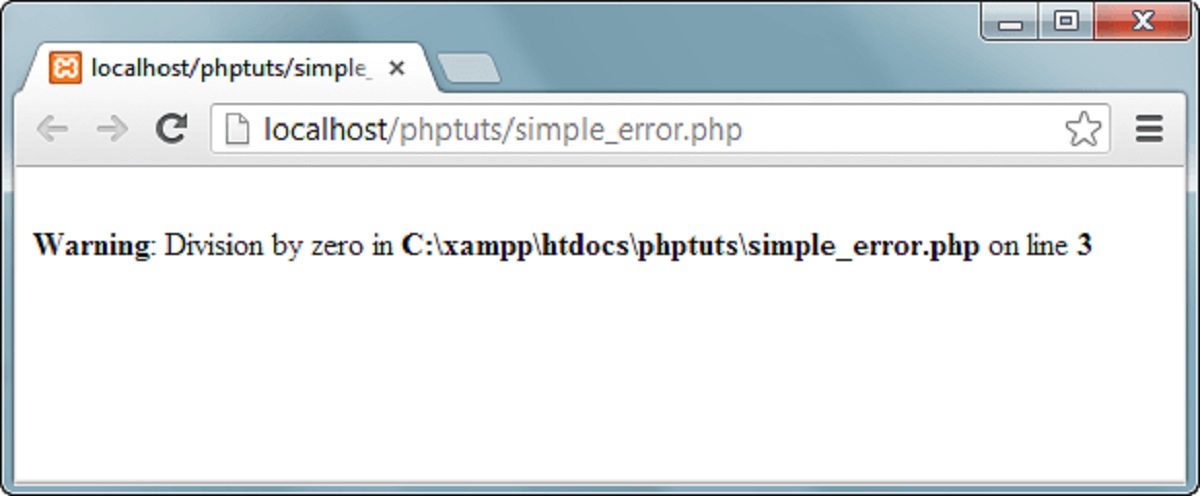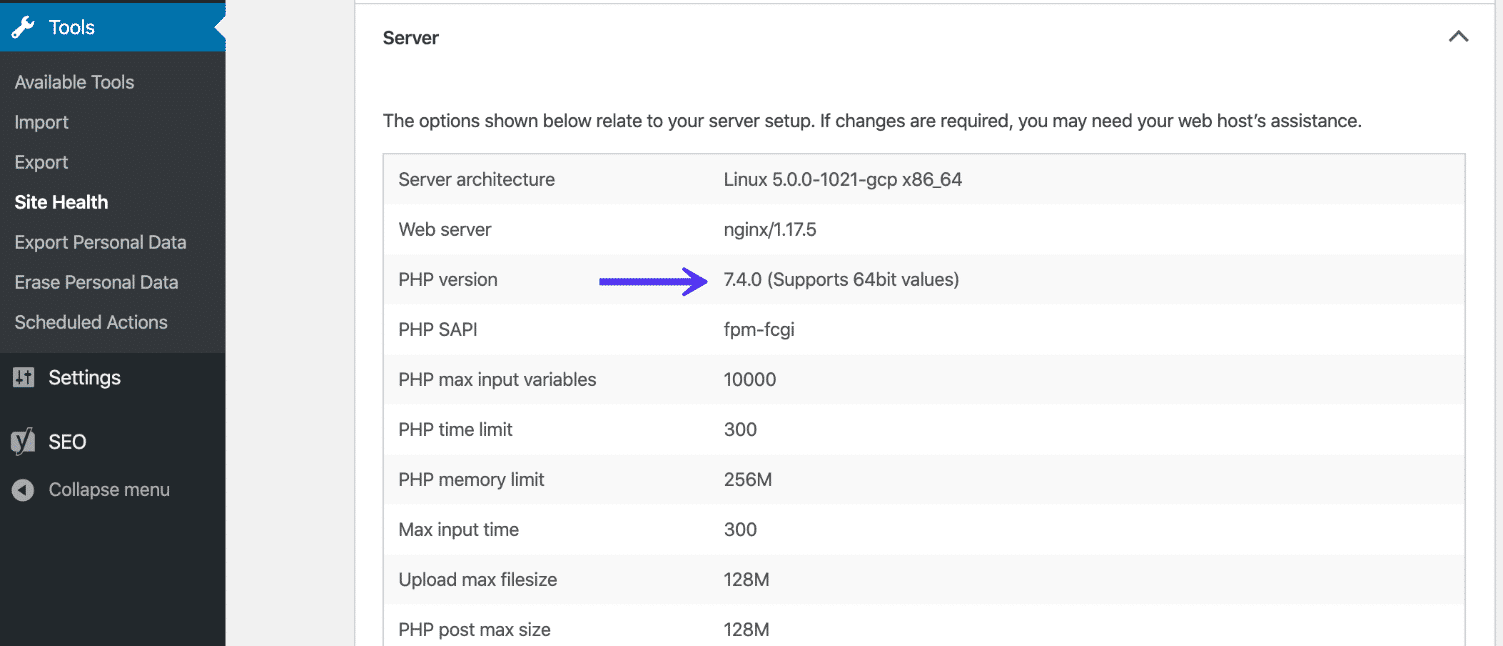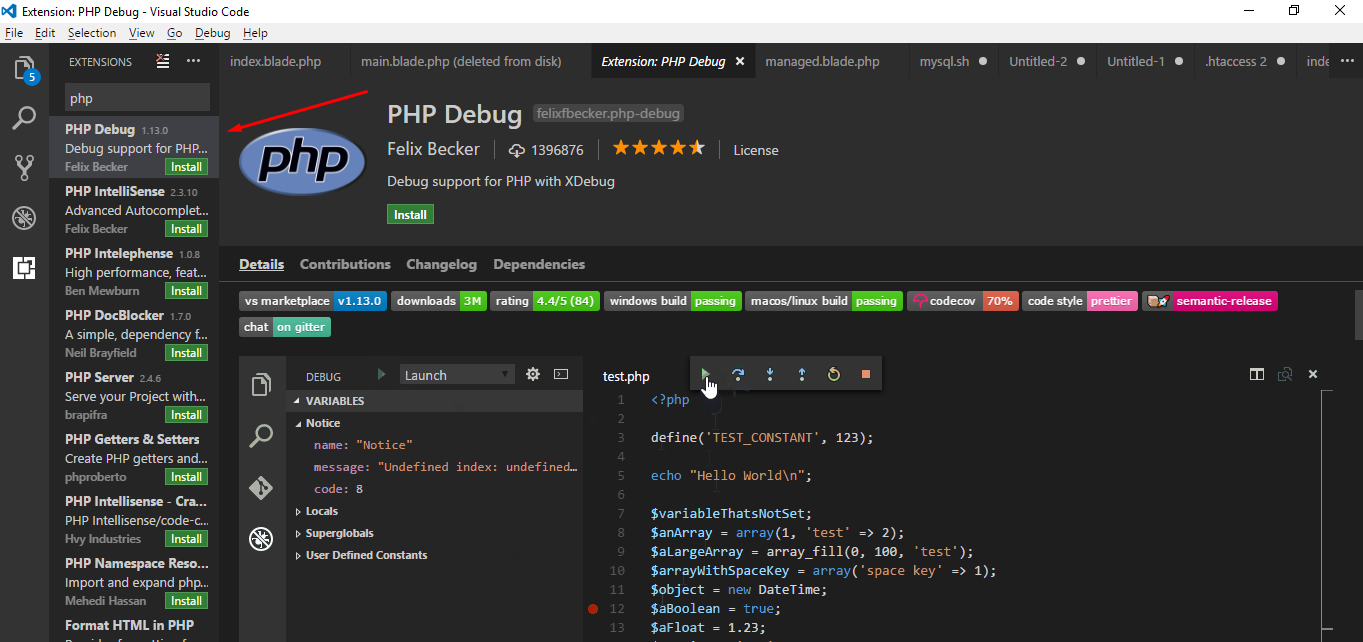What is Console Logging in PHP?
Console logging in PHP is a technique used to display information, debug messages, and variable values in the browser’s developer console. It allows developers to track and analyze the execution of their PHP code by logging useful information without interrupting the normal flow of the program.
By leveraging console logging, PHP developers can gain insights into the state of their applications and troubleshoot any errors or unexpected behaviors efficiently. Instead of relying solely on displaying messages on the webpage, console logging provides a more streamlined and targeted approach to debugging.
When PHP code is executed on the server, the console logs act as a medium to communicate with the developer in real-time. This means that developers can monitor variables, function calls, and the flow of the program without cluttering the user interface.
Console logging is particularly useful for large applications and complex logic, as it provides a convenient way to track the data flow, identify performance bottlenecks, and catch potential errors early on in the development process.
Additionally, console logging can be a valuable tool for remote error tracking. Developers can leverage logging libraries or services to capture and store error messages and stack traces, allowing them to troubleshoot issues reported by users effectively.
Console logging in PHP is not limited to displaying simple text messages. It also supports outputting objects, arrays, and other complex data structures. This enables developers to inspect the internal state of their code and verify that it is functioning as expected.
Overall, console logging in PHP is a powerful debugging technique that helps developers diagnose problems, validate assumptions, and optimize their code. It allows for efficient troubleshooting, leading to more stable and reliable applications.
Why Use Console Logging?
Console logging in PHP offers several benefits that can significantly improve the development and debugging process. Here are some reasons why you should consider using console logging in your PHP projects:
1. Real-time debugging: Console logging provides a real-time view of your PHP application’s execution in the browser’s developer console. This allows you to monitor variables, track function calls, and identify issues without relying solely on error messages displayed on the webpage.
2. Streamlined debugging process: With console logging, you can log specific messages or variable values at strategic points in your code to gain insights into its behavior. This helps you narrow down and pinpoint the source of issues more quickly and efficiently.
3. Non-intrusive debugging: Console logging does not interfere with the user interface of your PHP application. By sending logs to the console, you can observe the program execution without disrupting the user experience.
4. Data visualization: Console logging supports various data types, including objects and arrays. You can use console logging to inspect the structure and contents of complex data structures at different stages of your code’s execution, making it easier to spot any unexpected behavior.
5. Remote error tracking: By leveraging logging libraries or services, you can capture and store error messages and stack traces remotely. This enables you to monitor and troubleshoot issues reported by users, even if you don’t have direct access to their environment.
6. Performance optimization: Console logging can be used to measure and analyze the performance of different parts of your PHP code. By logging execution times and resource usage, you can identify potential bottlenecks and optimize your code for better performance.
7. Collaboration and documentation: Console logs can serve as a form of documentation, providing a record of the program’s execution and the values of variables at crucial points. This makes it easier for you to collaborate with other developers and share insights about the codebase.
In summary, console logging in PHP is a valuable tool for debugging and understanding the behavior of your code. It offers real-time insights, non-intrusive debugging, data visualization, remote error tracking, performance optimization, and collaboration benefits. By incorporating console logging into your PHP development workflow, you can streamline the debugging process and build more robust and reliable applications.
How to Enable Console Logging in PHP?
To enable console logging in PHP, you need to make use of the browser’s developer console and the appropriate PHP functions or libraries. Follow the steps below to enable console logging in your PHP projects:
1. Open the browser’s developer console: To view console logs, you need to open the developer console in your browser. In most browsers, you can do this by right-clicking on the webpage and selecting “Inspect” or pressing F12.
2. Include necessary JavaScript code: In order to display log messages from PHP in the browser console, you need to include JavaScript code in your PHP application. This code will capture the log messages and output them to the console. You can include this code directly in your HTML file or load it dynamically using a script tag.
3. Use PHP logging functions: PHP provides several functions for logging messages, such as echo and print. To send log messages to the browser console, you can use these functions to output the desired content. For example:
echo “This is a log message”;
4. Output variables to the console: In addition to logging messages, you can also output the values of PHP variables to the console for inspection. For example:
$myVariable = “Hello, world!”;
echo “Variable value:”, $myVariable;
5. Utilize debugging tools and libraries: There are various debugging tools and libraries available that provide more advanced console logging options. These tools can offer features such as logging levels, structured logging, filtering, and remote logging capabilities. Examples include Monolog, Kint, and ChromePHP.
6. Test and analyze the console logs: Once you have enabled console logging in your PHP application, run your code and monitor the browser console. You should see the log messages and variable values being displayed. Analyze the logs to identify any issues, debug your code, and gain insights into its execution.
Remember to remove or disable console logging in your production environment to ensure that sensitive information is not exposed and to maintain optimal performance.
By following these steps and using appropriate logging techniques and libraries, you can enable console logging in PHP and take advantage of this powerful debugging tool.
Basic Syntax of Console Logging in PHP
Console logging in PHP follows a straightforward syntax that allows you to output messages and variable values to the browser’s developer console. Understanding the basic syntax is essential for effectively utilizing console logging in your PHP projects. Here’s a breakdown of the basic syntax:
1. Outputting messages: To log messages to the console, you can use PHP’s echo or print statements. These statements allow you to display text-based messages in the console. For example:
echo “This is a log message”;
This will output the string “This is a log message” to the console.
2. Outputting variable values: In addition to text-based messages, you can also log the values of PHP variables. To do this, you can concatenate the variable’s value with the log message. For example:
$myVariable = “Hello, world!”;
echo “Variable value:”, $myVariable;
This will output “Variable value: Hello, world!” to the console, including the value of the $myVariable variable.
3. Logging complex data structures: Console logging in PHP allows you to output more than just simple strings and variable values. You can also log complex data structures, such as arrays and objects. To do this, you can use the print_r() or var_dump() functions. For example:
$myArray = [1, 2, 3];
print_r($myArray);
This will output the array in a human-readable format, including its keys and values.
4. Logging with formatting: PHP’s printf() function can be used to log messages with formatted placeholders. This allows you to create more dynamic and structured log output. For example:
$number = 42;
printf(“The answer to life, the universe, and everything is %d”, $number);
This will output “The answer to life, the universe, and everything is 42” to the console.
5. Logging with different log levels: Some logging libraries in PHP provide support for different log levels, such as “info”, “warning”, and “error”. These levels allow you to categorize and filter your log messages based on their significance. The specific syntax for using different log levels may vary depending on the logging library being utilized.
By mastering the basic syntax of console logging in PHP, you can effectively log messages, output variable values, display complex data structures, and utilize formatting options. This will enable you to gain valuable insights and streamline the debugging process in your PHP projects.
How to Output Variables to the Console
Outputting variables to the console in PHP is a useful technique for debugging and understanding the state of your code. By logging variable values, you can closely inspect their contents and track their changes during the execution of your PHP program. Here are a few methods you can use to output variables to the console:
1. Using echo or print statements: The simplest way to output variables to the console is by combining them with echo or print statements. For example:
php
$variable = “Hello, world!”;
echo $variable;
This will output the value of the variable “Hello, world!” directly to the console.
2. Using var_dump: The var_dump function is another handy method for displaying the contents of variables. Unlike echo or print, var_dump provides more detailed information about variables, including their data types and lengths. For example:
php
$myArray = [1, 2, 3];
var_dump($myArray);
This will output the array and its elements, along with their data types and lengths, to the console.
3. Using print_r: Similar to var_dump, the print_r function allows you to output complex data structures, such as arrays and objects, in a more readable format. For example:
php
$myArray = [1, 2, 3];
print_r($myArray);
This will output the array with its keys and values to the console, making it easier to analyze and understand.
4. Leveraging logging libraries: There are logging libraries available for PHP, such as Monolog or Kint, which provide more advanced features for logging variables. These libraries often offer additional functionalities like logging levels, structured logging, and remote logging capabilities. By using these libraries, you can have more control over variable logging and enhance your debugging experience.
Remember to remove or disable console logging in your production environment to ensure that sensitive information is not exposed and to maintain optimal performance.
By utilizing these methods, you can effectively output variables to the console in PHP, gaining valuable insights into the values and changes of your variables as your code executes. This enables you to diagnose issues, validate assumptions, and make informed decisions during the development process.
Logging Messages with Different Log Levels
Logging messages with different log levels provides a powerful way to categorize and filter your console logs in PHP. By assigning different severity levels to your log messages, you can prioritize and identify critical issues more efficiently. Here’s how you can use different log levels to enhance your console logging:
1. Using predefined log levels: Many logging libraries in PHP, such as Monolog and log4php, provide a set of predefined log levels like “info,” “warning,” and “error.” These levels enable you to categorize your log messages based on their significance. For example:
php
$log->info(“This is an informational message”);
$log->warning(“This is a warning message”);
$log->error(“This is an error message”);
By utilizing these predefined log levels, you can assign the appropriate level to each log message, enabling you to filter and differentiate log outputs.
2. Defining custom log levels: Some logging libraries allow you to define custom log levels specific to your application’s needs. This can be helpful when you require additional granularity beyond the default log levels. For instance, you might define a “debug” level for more detailed logs during development. Here’s an example:
php
$log->addLevelName(100, ‘debug’);
$log->log(100, ‘This is a debug message’);
In this case, a custom log level “debug” is created with a priority of 100, and a corresponding log message is logged with that level. This provides more fine-grained control over your console logs.
3. Controlling log output: Logging libraries often offer options to filter log output by log level. You can configure the library to only display log messages with certain levels or above. This can be helpful when you want to focus on critical errors and exclude less severe messages from cluttering the console. The specific method for configuring log levels may vary depending on the logging library you are using.
4. Remote logging: Remote logging services, such as Loggly and Papertrail, provide additional features like log aggregation and remote storage. These services allow you to log messages with different log levels and analyze them in a centralized dashboard. Remote logging can be an efficient way to collect and monitor logs across multiple environments and applications.
By using different log levels in your console logging, you can prioritize and categorize log messages, allowing for easier filtering, debugging, and troubleshooting. It is recommended to define a consistent log level strategy for your application and leverage logging libraries that support various log levels and configuration options.
Using Console Logging for Error Debugging
Console logging in PHP is a valuable tool for debugging errors and troubleshooting issues in your code. By leveraging console logging techniques, you can effectively identify and diagnose errors, gaining insights into the execution flow of your PHP application. Here’s how you can use console logging for error debugging:
1. Display error messages: When encountering an error within your PHP code, you can use console logging to display error messages in the developer console. By logging relevant error details, such as error codes or error descriptions, you can quickly identify the root cause of the problem.
2. Log stack traces: When an error occurs, it is often crucial to understand the sequence of function calls that led to the error. You can log the stack trace using console logging to trace the execution path and determine which code blocks or functions are involved in the error. This helps you pinpoint the exact location of the issue.
3. Log variable values: Console logging allows you to log the values of variables involved in the error. By outputting variable values at critical points in your code, you can gain insights into why certain conditions are not being met or why unexpected data is causing problems. This helps you identify any incorrect or unexpected values that contribute to the error.
4. Utilize debug flags: You can implement debug flags in your PHP code and use console logging to track the status of these flags during the execution flow. Setting a debug flag to true when an error occurs allows you to log helpful information only when needed, reducing unnecessary clutter in the console output.
5. Conditional logging: With console logging, you can conditionally log messages or variable values based on certain conditions. This allows you to focus on specific scenarios or parts of your code that are more likely to encounter errors. By strategically placing console logging statements with appropriate conditions, you can narrow down the potential areas of concern.
6. Logging within exception handling: When handling exceptions in PHP, console logging can be invaluable for logging relevant error information, such as exception messages and stack traces. By capturing and displaying exception details, you can quickly identify and troubleshoot the cause of the exception.
7. Remote error tracking: Many logging libraries or services offer remote error tracking capabilities. By integrating these tools into your application, you can log errors to a centralized location and monitor them remotely. Remote error tracking allows you to capture and analyze errors reported by users, facilitating quicker resolutions.
By using console logging techniques for error debugging, you can effectively identify, understand, and resolve errors in your PHP code. It enables you to log error messages, stack traces, variable values, and implement conditional logging, all contributing to a streamlined debugging process and more robust applications.
Advanced Console Logging Techniques
Console logging in PHP offers a range of advanced techniques that can enhance your debugging capabilities and provide deeper insights into the behavior of your code. By leveraging these techniques, you can gain a better understanding of the execution flow, analyze complex data structures, and optimize your debugging process. Here are some advanced console logging techniques:
1. Logging timestamps: Adding timestamps to your console logs can provide valuable information about when specific events or log messages occur. This can help with tracking the timing of function calls, measuring performance, and identifying potential lag or delays in your PHP application.
2. Structured logging: Structured logging involves formatting your log messages in a structured manner using key-value pairs or JSON format. This allows for more organized and machine-readable log entries, making it easier to search, filter, and analyze logs. Structured logging is especially helpful when dealing with large and complex applications.
3. Contextual logging: Contextual logging involves including additional contextual information in your log messages. This might include session information, user IDs, or request details. Adding such context to your logs helps provide a more complete picture of the events leading to an error, making it easier to trace and troubleshoot issues.
4. Logging within loops and iterations: When dealing with loops or iterative processes, console logging within each iteration can be useful for monitoring the progress, tracking variable values, and identifying any unexpected behavior. This technique helps in identifying issues that might only arise during specific iterations or when certain conditions are met.
5. Conditional and dynamic logging: Console logging can be made conditional by using logical statements or conditions to control whether a specific log message should be displayed. This allows you to enable or disable logging for specific scenarios or based on certain criteria. Dynamic logging allows you to adjust the verbosity of your logs at runtime, providing greater flexibility in debugging and troubleshooting.
6. Remote debugging: Remote debugging tools and services, such as Xdebug, allow you to connect your PHP application to an integrated development environment (IDE) or debugging server. This enables you to set breakpoints, step through code, and inspect variables remotely. Remote debugging provides a more powerful and interactive debugging experience.
7. Log aggregation and analysis: Some logging libraries or services offer log aggregation and analysis features. These tools allow you to collect, aggregate, and analyze logs from multiple sources or environments. Log analytics can help you identify patterns, pinpoint recurring issues, and gain deeper insights into the overall health and performance of your application.
By utilizing these advanced console logging techniques, you can optimize the debugging process, gain deeper insights into your PHP application’s behavior, and efficiently troubleshoot and resolve issues during development.
Best Practices for Console Logging in PHP
Console logging in PHP is a powerful tool for debugging and gaining insights into your code’s execution. To ensure effective and efficient console logging in your PHP projects, it is important to follow these best practices:
1. Use appropriate log levels: Assign appropriate log levels to your messages to categorize their significance. Use a combination of predefined log levels (such as “info,” “warning,” and “error”) and custom levels if required. This helps in filtering and prioritizing logs based on their importance.
2. Be mindful of log verbosity: Avoid excessive logging, especially in production environments. Log only the necessary information to minimize performance impact and prevent cluttered console output. Consider using debug flags or configuration options to control logging verbosity.
3. Include context information: Provide context information in your logs to aid in troubleshooting. Include relevant details such as request identifiers, user information, or session IDs. This helps in tracking and understanding log events, particularly in complex and distributed systems.
4. Log stack traces for errors: When encountering errors, log the stack trace to identify the path and sequence of function calls leading to the error. This provides valuable information for pinpointing the source of the issue and aids in debugging and resolving errors.
5. Utilize structured logging: Structure your log messages by using key-value pairs or JSON format. A well-structured log helps in easier parsing, filtering, and analysis of log entries. It also enables integration with log management tools and simplifies log aggregation and analysis.
6. Monitor performance impact: Console logging can introduce overhead, especially when logging large amounts of data or performing expensive operations to generate log messages. Be mindful of the potential impact on performance and consider using conditional logging or trimming excessive log output to mitigate any negative effects.
7. Remove or disable console logging in production: Console logging is primarily intended for development and debugging purposes. In production environments, it is recommended to remove or disable console logging to avoid exposing sensitive information and unnecessary performance overhead.
8. Leverage logging libraries and tools: Consider using well-established logging libraries or frameworks in PHP, such as Monolog or log4php. These libraries offer advanced features like log levels, log formatting, remote logging, and integration with third-party logging services. They provide a standardized and robust approach to console logging.
9. Regularly review and maintain logs: Logs can accumulate over time, so it’s important to regularly review and analyze them. Clear out unnecessary logs, rotate log files, and maintain an efficient log management strategy to ensure optimal performance and storage.
By adhering to these best practices, you can effectively utilize console logging in PHP, streamline your debugging process, and gain valuable insights into your code’s behavior, ultimately leading to more efficient and reliable PHP applications.
Conclusion
Console logging in PHP is a powerful technique that allows developers to enhance their debugging process, gain insights into code execution, and troubleshoot issues effectively. By logging messages, variable values, and stack traces to the browser’s developer console, PHP developers can closely monitor the behavior of their applications and identify errors or unexpected behaviors.
In this article, we explored the concept of console logging in PHP, its benefits, and best practices. We learned that console logging provides real-time debugging, non-intrusive monitoring, and valuable data visualization. By using console logging strategically, developers can optimize code performance, collaborate effectively with team members, and track the state of their applications.
We discussed how to enable console logging, the basic syntax for logging messages and variable values, and logging complex data structures. Additionally, we explored the concept of logging messages with different log levels to categorize and prioritize logs based on their significance.
Furthermore, we delved into advanced console logging techniques such as logging timestamps, structured logging, contextual logging, and dynamic logging. These techniques allow for more precise and detailed debugging, making it easier to identify and resolve issues.
To ensure effective console logging, we emphasized the importance of using appropriate log levels, being mindful of log verbosity, including context information, and monitoring the performance impact of logging operations.
Lastly, we recommended utilizing logging libraries and tools, reviewing and maintaining logs regularly, and removing or disabling console logging in production environments to minimize overhead and protect sensitive information.
By following these best practices and leveraging the capabilities of console logging in PHP, developers can significantly improve their debugging process, optimize code performance, and build more reliable and efficient PHP applications.







